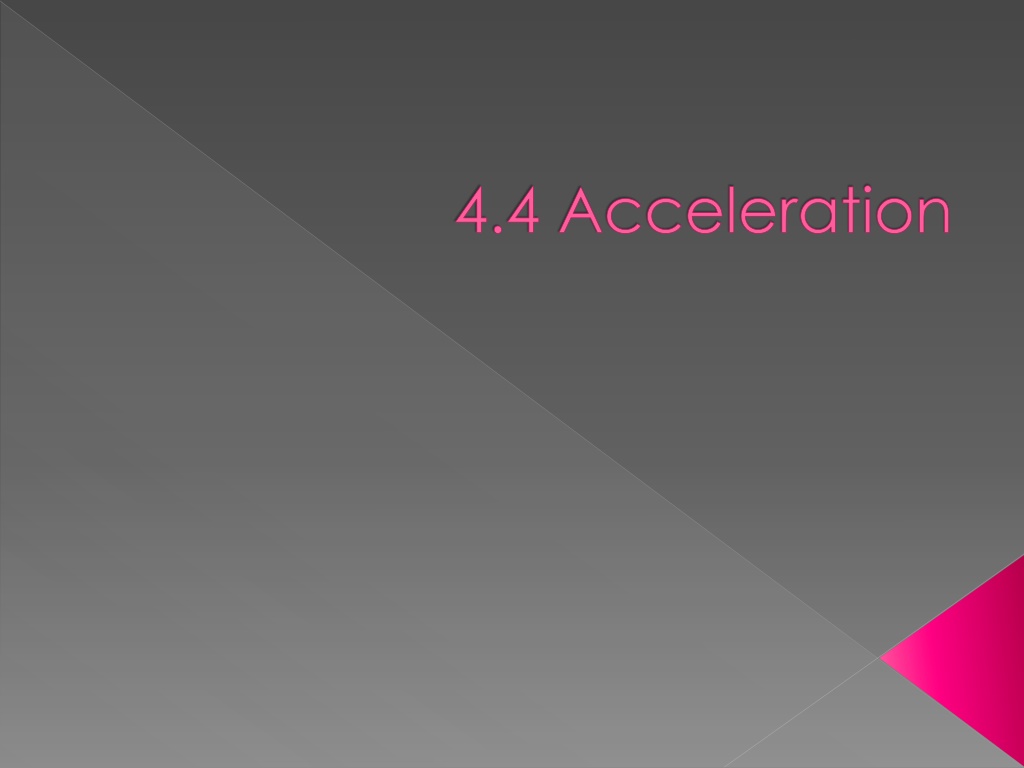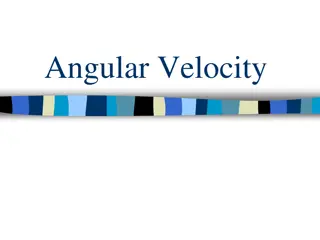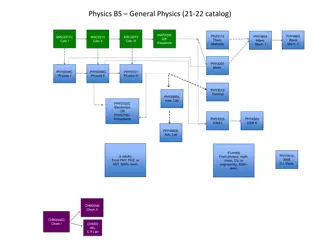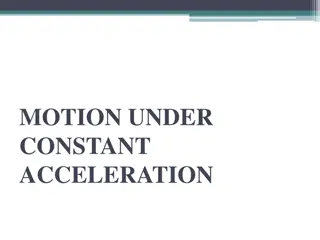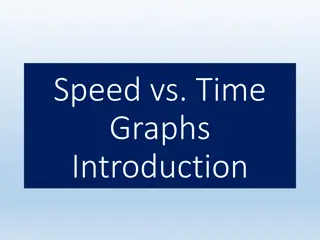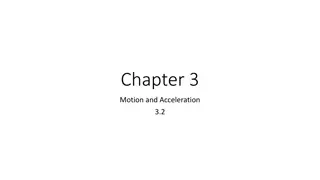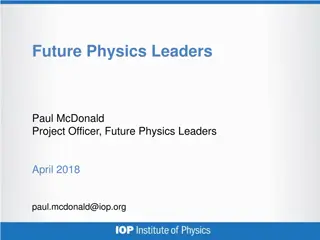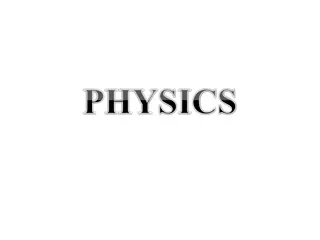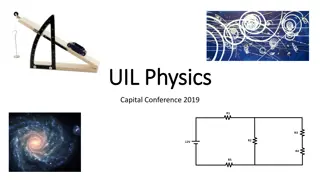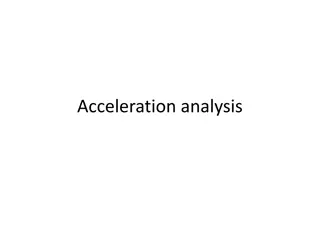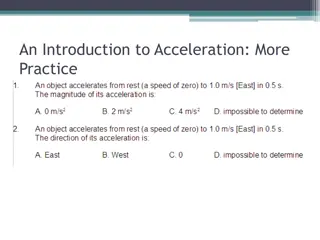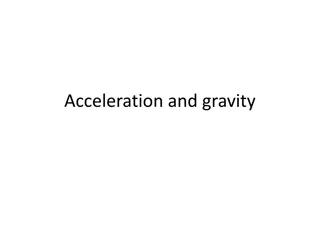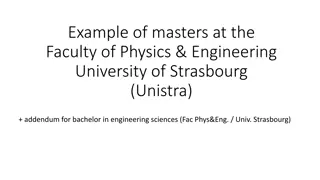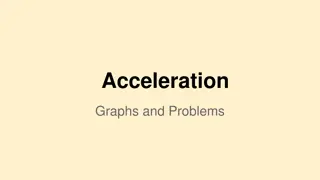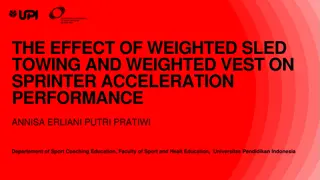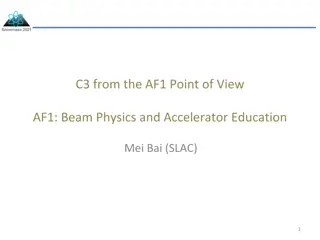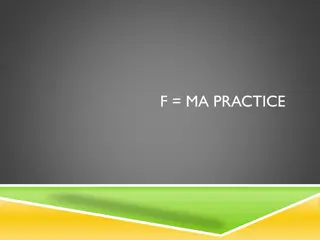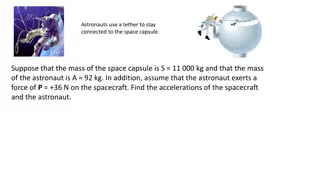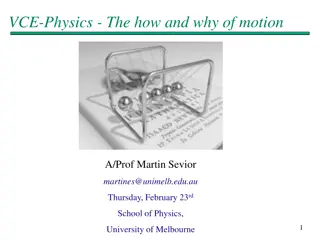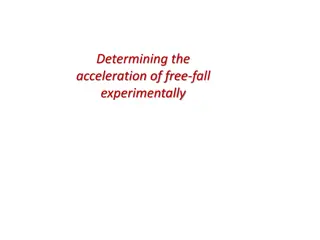Acceleration in Physics
Acceleration is the rate at which velocity changes, encompassing both increases and decreases in speed. In physics, acceleration is defined as the rate of change in velocity, making it a vector quantity due to its directional nature. This article explores the concept of acceleration, including examples such as deceleration, and explains how speed, velocity, and acceleration are interconnected in the realm of physics.
Download Presentation

Please find below an Image/Link to download the presentation.
The content on the website is provided AS IS for your information and personal use only. It may not be sold, licensed, or shared on other websites without obtaining consent from the author. Download presentation by click this link. If you encounter any issues during the download, it is possible that the publisher has removed the file from their server.
E N D
Presentation Transcript
4.4 Acceleration Acceleration is the rate at which the velocity is changing.
In physics, the term acceleration applies to decreases as well as increases in speed. The brakes of a car can produce a large decrease per second in the speed. This is often called deceleration.
A car is accelerating whenever there is a change in its state of motion.
A car is accelerating whenever there is a change in its state of motion.
A car is accelerating whenever there is a change in its state of motion.
Change in Direction Acceleration is defined as the rate of change in velocity, rather than speed. Acceleration, like velocity, is a vector quantity because it is directional.
Accelerate in the direction of velocity speed up
Accelerate at an angle to velocity change direction
Speed and velocity are measured in units of distance per time. Acceleration is the change in velocity (or speed) per time interval. Acceleration units are speed per time. Changing speed, without changing direction, from 0 km/h to 10 km/h in 1 second, acceleration along a straight line is
think! Suppose a car moving in a straight line steadily increases its speed each second, first from 35 to 40 km/h, then from 40 to 45 km/h, then from 45 to 50 km/h. What is its acceleration?
Answer: The speed increases by 5 km/h during each 1-s interval in a straight line. The acceleration is therefore 5 km/h sduring each interval.
think! In 5 seconds a car moving in a straight line increases its speed from 50 km/h to 65 km/h, while a truck goes from rest to 15 km/h in a straight line. Which undergoes greater acceleration? What is the acceleration of each vehicle?
Answer: The car and truck both increase their speed by 15 km/h during the same time interval, so their acceleration is the same.
